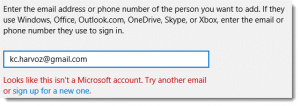If you’re using the default Windows user account every time you log in to your computer, you could be exposing your system to the very real threat of viruses and malware. That’s because administrative level accounts, such as the default one you first created when setting up your new computer, have access–and permissions to alter–all your computer’s system files and settings. Any malware or viruses that you accidentally download via that account will also have access to those same settings and files. Creating and using additional user accounts for yourself and others who share your system can reduce the risk.
Adding personal user accounts below the admin level keeps viruses and other kinds of malware out of your system because they can only access what a current user is accessing. Creating a personal account for yourself and others who use the system keeps malware away from your sensitive system files and lets each user customize the desktop and start menu to suit individual preferences.
Parents can set up child accounts to limit children’s access to sites and services they shouldn’t use. You might also create a guest account for visitors, so there’s no need to worry about how they use the computer or whether they can access important files. Creating additional accounts in Windows 10 is easy.
Creating Additional User Accounts
From your computer’s START menu, click SETTINGS. Then select ACCOUNTS to open a dialog box that allows you to set up new additional new user accounts. You’ll have the option to Add a Family Member or Add Someone Else To This PC.

Adding Family Members and Creating Children’s Accounts
Adding family members allows you to create special accounts for children to keep them safe online. Child accounts let adults supervise online activity, provide money for buying things like apps or games, set time limits or block sites. It’s even possible to find children with Windows 10 mobile phones in real time on the map. The main benefit of a family account is to allow adult users control over children’s online activity, so adults can also choose to create non-family accounts for themselves.
To create family accounts, click Add a Family Member, then choose Adult or Child and follow the on-screen directions. If the person you’re adding doesn’t have an email address, create one for them @outlook.com as part of the setup process. Note: when adding account holders as family members, the primary account holder retains control over the account, which includes the ability to view personal files.
Adding Other Adult Users
To add adult users to non-family accounts that you, the primary account holder, do not manage, select Add Someone Else To This PC. To do this you will need that person’s Microsoft email address or Microsoft won’t allow the setup.

If the person you’re adding doesn’t already have an MS email account, choose the option to sign up for a new one. Then select Standard User if you don’t want to allow the user access to all your system files and other sensitive information on the computer.
User Levels
To stop the majority of viruses and malware, set up a Standard User level sign in for yourself as well as others to use on a daily basis. Or, create a new admin-level account, then demote your default account to a standard user. Because malware can access only what the current user can access, by simply using a standard, rather than an admin-level account, you block access to all your system files. Downloading an email attachment could be disastrous for an admin user, but pose no risk at all for a standard user.





